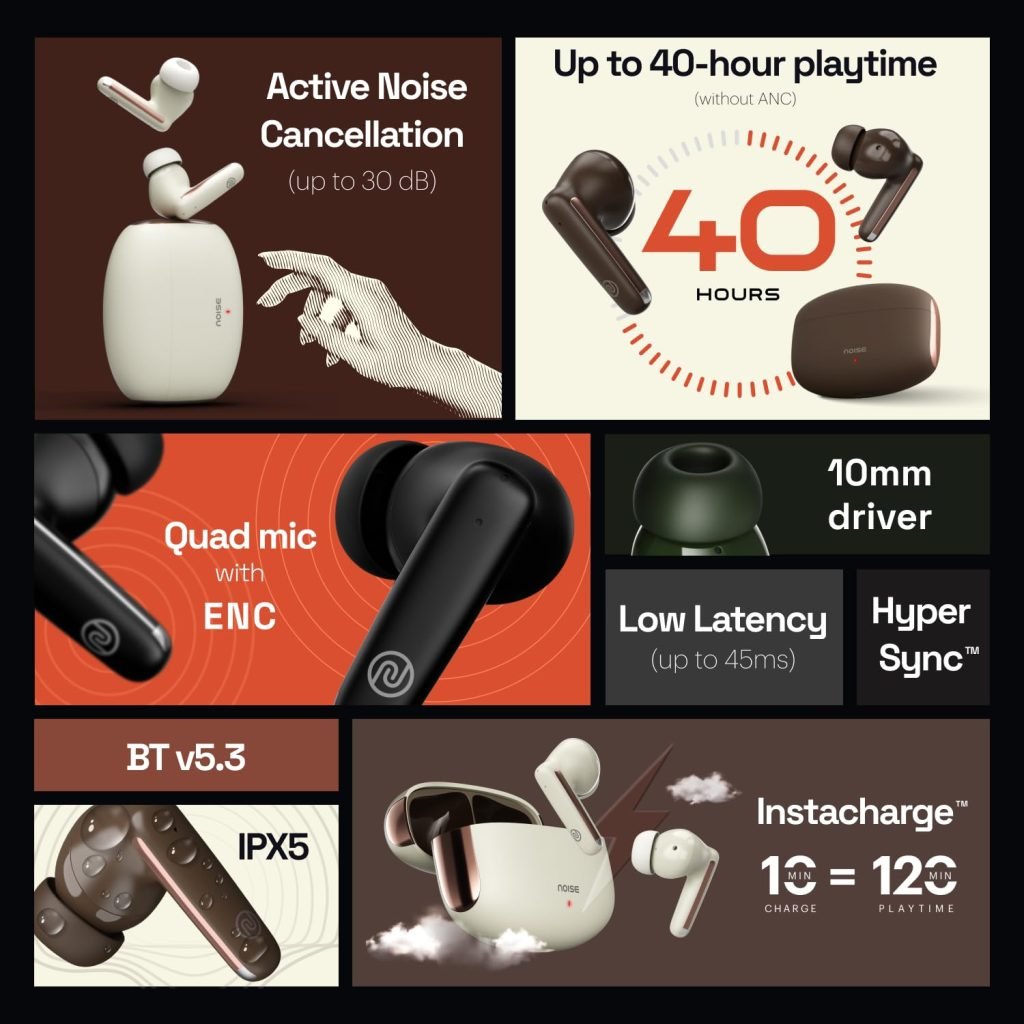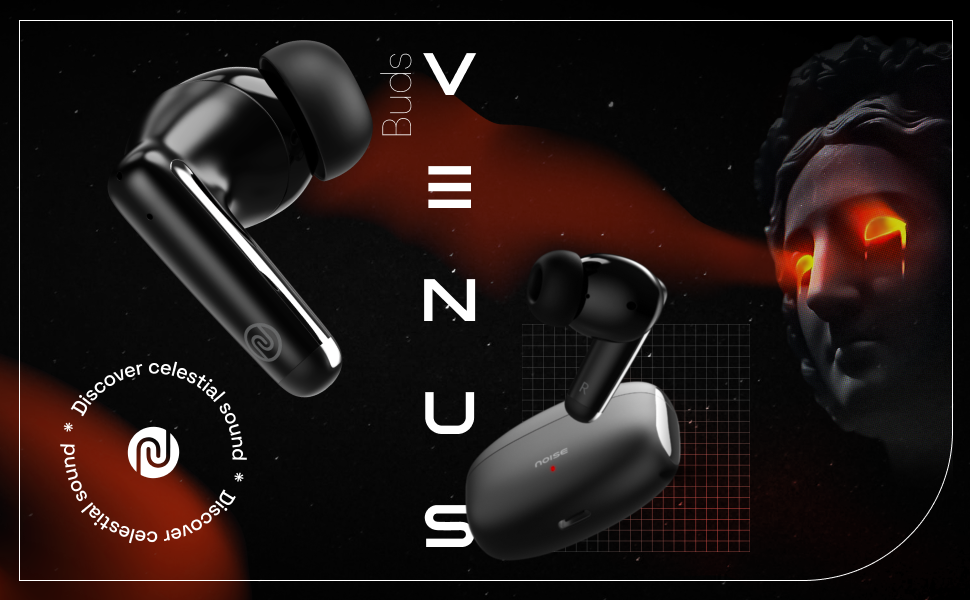Noise Buds Venus with 30dB ANC and Bluetooth 5.3 are now available
Following the release of the Noise Luna smart ring yesterday, the brand has now released the Noise Buds Venus, a new pair of TWS earbuds with active noise cancellation. Let's look at its specifications and cost.
Price and availability
The Noise Buds Venus TWS is available for a special introductory price of $1,699. It is available in the following colors: Cosmic Black, Lunar Ivory, Galaxy Green, and Stellar Brown and may be purchased on the company's website and Amazon.in beginning today, July 26th at 12 P.M.
Noise Buds Venus earbuds specifications
The Noise Buds Venus features 10mm drivers for a strong and immersive audio experience. It supports Bluetooth v5.3, ensuring a stable and dependable connection to your devices. With SBC and AAC codec support, you may enjoy high-quality audio streaming.
The earphones have easy-to-use touch controls that let you manage your music and calls. It includes a quad microphone configuration with Environmental Noise Cancellation Technology to provide clear and crisp calls even in noisy areas. The active noise cancellation (ANC) technology may eliminate up to 30dB of external noise, resulting in a more pleasant listening experience.
One of the highlights of the earbuds is its impressive battery life. You get up to 40 hours of total playback time without ANC, and a single charge offers 7 hours of continuous usage. Thanks to the Instacharge fast charging support, just 10 minutes of charging provides an additional 120 minutes of playback time.
For gamers and videos, the earbuds offer low latency of 45ms, reducing any delay between audio and video. The Noise Buds Venus features IPX5 splash and sweat resistance. This makes it suitable for workouts and outdoor activities without worry about damage from rain or sweat. Additionally, the earbuds support AI voice assistants, making it easy to access information and control your devices hands-free.












